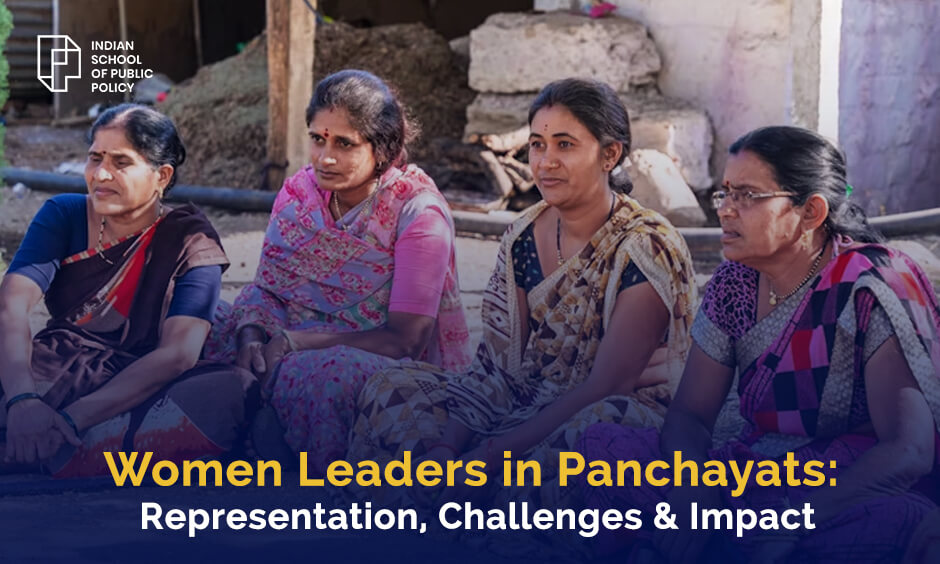
Women in Village Panchayats in Haryana: Representation and Realities

The 73rd Constitutional Amendment ushered in a new era for women in grassroots governance. Haryana is part of this story: according to the state Panchayati Raj Institutions (PRI) dashboard, out of around 925 Sarpanch posts, around 48% (443) are currently held by women.
As many as 21 States and two Union Territories, in their respective State Panchayati Raj Acts/Rules, provisioned for 50% reservation for women in Panchayats, going beyond the 73rd and 74th constitutional amendments (1992) mandating one-third reservation for women in PRIs. Haryana has made this provision through the Haryana Panchayati Raj Act, 1994.
Challenges in Empowerment
Nationally, India has nearly 14.5 lakh elected women representatives (EWRs) in PRIs, constituting about 46% of the total, an unparalleled figure for women in local governance anywhere in the world.
Yet, numbers alone do not guarantee empowerment. The Development Monitoring and Evaluation Office (DMEO), an attached office of NITI Aayog, highlights in its Gender Mainstreaming in Governance report (2022) that many government schemes still lack gender-disaggregated data, targeted budgeting, or capacity-building efforts for women leaders. Its Women & Child Development Sector Evaluation (2021) further shows gaps in outreach and awareness that restrict women’s ability to access and implement welfare schemes effectively.
These limitations are echoed in Haryana. A case study from Hisar district (Amity University, 2025) finds that while women hold Sarpanch seats, many still face proxy leadership by male relatives, resistance from entrenched norms, and the dual burden of household and public responsibilities. Such challenges limit women’s independent decision-making, showing why representation must be matched with institutional support and social change.
Transformative Impact of Women Leaders
At the same time, research shows that when women do exercise their authority, the results are transformative. Experimental studies by Chattopadhyay and Duflo (2004) demonstrate that female village heads invest more in public goods prioritized by women, such as drinking water and sanitation. Follow-up research (Beaman et al., 2012) shows that exposure to women leaders raises adolescent girls’ aspirations and educational attainment, creating intergenerational impacts.
Evaluations by DMEO and case studies from the National Institute of Rural Development and Panchayati Raj (NIRDPR) document women sarpanches leading sanitation campaigns, boosting school enrolments, and advancing women-centric welfare interventions.
Moving Beyond Representation
The lesson is clear: representation is only the first step. To fully realize the potential of women in Panchayats, Haryana and India must continue to invest in training, financial autonomy, data systems, and enforcement of women’s authority.
When women leaders are empowered beyond the ballot, they not only strengthen governance but also reshape social norms, ensuring grassroots democracy delivers both representation and results.
References
- Press Information Bureau, Government of India. (2025, July 30). Government is promoting greater participation of women in local governance and political leadership roles. https://pib.gov.in/PressReleasePage.aspx?PRID=2150216
- Development Monitoring and Evaluation Office (DMEO), NITI Aayog. (2022). Thematic Paper on Gender Mainstreaming in Governance. Government of India. https://dmeo.gov.in/sites/default/files/2022-06/Thematic_Paper_Gender_Mainstreaming_220622.pdf
- Development Monitoring and Evaluation Office (DMEO), NITI Aayog. (2021). Sector Evaluation Report: Women and Child Development. Government of India. https://dmeo.gov.in/sites/default/files/2021-07/2_Sector_Report_Women_Child_Development_0.pdf
- Kaur, P., & Yadav, R. (2025). From Margins to Mainstream: Women’s Leadership in Local Self-Governance – A Case Study of Hisar, Haryana. Amity University (ResearchGate preprint). https://www.researchgate.net/publication/388954745
- Chattopadhyay, R., & Duflo, E. (2004). Women as Policy Makers: Evidence from a Randomized Policy Experiment in India. Econometrica, 72(5), 1409–1443.
- Beaman, L., Duflo, E., Pande, R., & Topalova, P. (2012). Female Leadership Raises Aspirations and Educational Attainment for Girls: A Policy Experiment in India. Science, 335(6068), 582–586. https://www.science.org/doi/10.1126/science.1212382
- National Institute of Rural Development and Panchayati Raj (NIRDPR). (Various years). Case Studies on Women in Panchayati Raj. Ministry of Rural Development, Government of India. http://nirdpr.org.in
FAQs
What constitutional provision supports women in Panchayati Raj Institutions (PRIs)?
The 73rd and 74th Constitutional Amendments mandate one-third reservation for women in PRIs. Haryana extends this to 50% through the Haryana Panchayati Raj Act, 1994.
Do numbers alone ensure women’s empowerment in Panchayats?
No. Studies show that proxy leadership, social norms, and dual household-public responsibilities can limit women’s independent decision-making despite high representation.
How do women leaders impact local governance?
Research shows that women Sarpanches prioritize public goods like drinking water and sanitation, boost school enrolments, and enhance women-centric welfare programs.
What measures can strengthen women’s roles in Panchayats?
Investing in training, financial autonomy, gender-disaggregated data, and enforcement of authority helps women fully leverage their positions for transformative governance.
Are there intergenerational benefits of women leadership in Panchayats?
Yes. Exposure to women leaders raises aspirations and educational attainment for adolescent girls, creating lasting social impacts.


